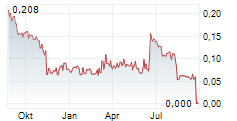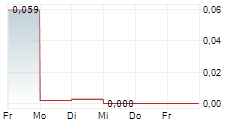Kancera AB (publ) (Kancera) today reports the top-line results from the KANDOVA study, a one-arm, open-label, multi-centre combined phase Ib/IIa study of KAND567 in combination with carboplatin in ovarian cancer.
- The primary objective was met - to determine the recommended dose and evaluate safety and tolerability.
- The secondary objective - to show signals of KAND567's anti-tumor effect in combination with carboplatin, was also met.
The KANDOVA study is a one-arm, open-label, multi-centre, combined phase Ib/IIa study of Kancera's candidate drug KAND567 in combination with standard of care carboplatin therapy in ovarian cancer patients with relapse from earlier carboplatin therapy. All study subjects received active drug, i.e. no study subjects received placebo, in combination with carboplatin.
In total, 18 patients were recruited in the study, 11 in phase Ib and 7 in phase IIa, and evaluated with regards to the primary objective - safety and tolerability. 15 of these study subjects completed at least two treatment cycles, which was the study requirement to be evaluable with regards to the secondary objective - anti-tumor effect. Study subjects were followed for up to six carboplatin treatment cycles in combination with KAND567.
The primary study objective was met - to determine the recommended dose and evaluate safety and tolerability
The primary objective of the KANDOVA study was met by demonstrating that an expected effective concentration of KAND567 in the blood was achieved with a safe and tolerable dose, and that this dose was administered without clinically relevant adverse events. Based on the results from the phase Ib part of the study and the recommendation from the external safety committee, the recommended KAND567 dose was determined and administered to all study subjects during the second part of the study, phase IIa.
The primary endpoint was analyzed through blood samples, clinical assessments according to standard of care and reporting of adverse events (N=18). In total, nine study subjects of the total study population, completed all six treatment cycles per the study protocol.
The secondary study objective is assessed to have been met - to show signals of anti-tumor effect
The secondary study objective concerning anti-tumor effect was evaluated without a placebo-control group, by descriptively document anti-tumor effect in relation to exploratory endpoints concerning KAND567's expected mode of action.15 out of 18 study subjects completed at least two treatment cycles, which was the study requirement to be evaluable concerning the study's secondary endpoints.
- Disease progression, assessed according to RECIST 1.1 and GCIG, showed that the share of patients with partial response or stable disease was 73% at week 12 and 53% at week 18 (N=15).
- Exploratory analyses of tumor biopsies (N=15) showed that high levels of the fractalkine receptor CX3CR1 in the cancer cells* before the start of treatment resulted in partial response or stable disease in 75% of the evaluable study subjects according to RECIST 1.1 and GCIG, while low levels of CX3CR1 in the cancer cells resulted in 43% of the study subjects with stable disease (no partial response).
- In addition, exploratory analyses of tumor biopsies (N=7) from study subjects from which it was possible to collect biopsies both prior to start of treatment and after 8 weeks of treatment showed an average reduction of tumor content** of 29%. In addition, in study subjects with reduced tumor content or stable disease according to RECIST 1.1 and GCIG, an increased DNA damage in cancer cells was observed, which is in line with KAND567's expected mode of action for anti-tumor effect.
* Evaluated with mRNA analyses on tumor biopsies.
** Evaluated as the percentage of cancer cells in the biopsy collected after 8 weeks of treatment compared to the biopsy collected before start of treatment.
Kancera assesses that the top-line results from the KANDOVA study are positive. In addition to confirming a favorable safety profile at the selected dose, the secondary and exploratory endpoints indicate that KAND567 may have additive effect to standard therapy with carboplatin in patients with high levels of CX3CR1 in the cancer cells. If this signal can be confirmed in a larger and placebo-controlled phase II study, KAND567 has the potential to improve outcomes for a very hard to treat patient population. In addition, the data from the study are highly valuable for the overall fractalkine program, for example with regards to pharmacokinetics, safety and tolerability as the study subjects in the KANDOVA study were administered with both a higher dose and during a longer period of time compared to previous clinical studies with KAND567 in patients.
"The study shows that KAND567 is well tolerated in the studied patient population with advanced disease progression. The fact that the study includes relatively few patients limits the opportunity to evaluate anti-tumor effect, but from a predictive marker perspective I found it very interesting that the share of patients with partial response or stable disease is so much higher in patients with high CX3CR1 expression in the tumor prior to the start of treatment", says primary investigator Hanna Dahlstrand, senior consultant and associate professor at the Karolinska University Hospital Solna.
"With the positive KANDOVA top-line results we are now intensifying our business development activities and don't rule out a continuation of the development in the field of oncology through partnerships," says Peter Selin, CEO at Kancera.
About the KANDOVA study
KANDOVA is a one-arm, open-label, multi-centre, combined phase Ib/IIa study of Kancera's candidate drug KAND567 in combination with standard of care carboplatin therapy in ovarian cancer patients with relapse from previous carboplatin therapy. KAND567 was administered during two weeks in connection with infusion of carboplatin, which according to standard of care occurs every third week. Study subjects were followed for up to a maximum of 6 carboplatin treatment cycles, i.e. during approximately 18 weeks.
The primary objective of the study is to evaluate safety and tolerability. The secondary objective is to
evaluate signals of KAND567's anti-tumor effect, when administered in combination with carboplatin, according to RECIST 1.1 (Response Evaluation Criteria in Solid Tumors) and CGIG (Gynecologic Cancer Intergroup). RECIST 1.1 and CGIG are well established definitions of anti-tumor response during cancer treatment that include assessments of blood samples and CT-scanning.
The study is conducted at five university hospitals in Sweden, Norway and Denmark in collaboration with the clinical trials unit of the Nordic Society of Gynaecological Oncology (NSGO-CTU), a society of leading academic hospitals and gynaecological clinicians in the Nordic countries. Primary investigator in the study is Hanna Dahlstrand, senior consultant and associate professor at the Karolinska University Hospital Solna.
About Kancera AB (publ)
Kancera is a clinical stage biotech developing a new class of small molecule drugs with an immune cell modulating mode-of-action with focus on cardiovascular diseases. The stock is traded on the Nasdaq First North Premier Growth Market. Redeye AB is the company's Certified Adviser and can be contacted at certifiedadviser@redeye.se.
For further information:
Visit Kancera's website: www.kancera.com
or contact:
ir@kancera.com or phone: +46 (0)8-5012 60 80
This information is information that Kancera is obliged to make public pursuant to the EU Market Abuse Regulation. The information was submitted for publication, through the agency of the contact persons set out above, at 2025-06-13 08:00 CEST.


